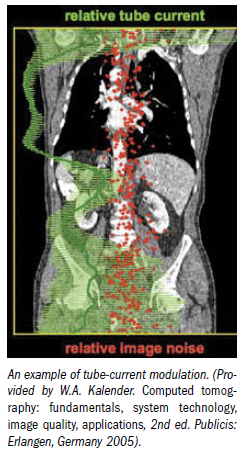Outdated CT protocols put imaging patients at risk
The scanner could be brand new, but there is a good chance it's operating with old protocols imported from a previous unit and not optimized for best imaging at the reduced dose levels possible today, a researcher suggests.
The scanner could be brand new, but there is a good chance it's operating with old protocols imported from a previous unit and not optimized for best imaging at the reduced dose levels possible today, a researcher suggests.
Outdated CT protocols are a widespread problem, according to Dr. Aaron Sodickson, assistant director of emergency radiology at Brigham and Women's Hospital in Boston.
“Many practices don't take full advantage of available dose-reduction tools,” he said in an interview about his presentation at the American Roentgen Ray Society meeting.
Each practice needs a local champion responsible for protocol oversight and optimization, but they can only do that with the right information.
“They need information from the manufacturer about what the available tools are and how to make the best use of them,” he said.
CT protocols are often ported from older to newer scanners, which may result in unnecessary radiation exposure for patients. Optimal scan acquisition is the radiologist's responsibility, and there are several steps radiologists can take to dose-optimize their CT protocols, Sodickson said in his presentation.
General strategies radiologists can implement include:
• Use size-dependent protocols;
• Understand and enable dose-reduction tools;
• Reduce the number of passes through a body region;
• Reduce duplicate or overlapping coverage;
• Reduce mAs for high-contrast imaging;
• Optimize IV contrast infusion timing; and
• Lower kVp if patient size allows.

The most important of these is size-dependent protocols, Sodickson said. Good-quality images can be obtained with many fewer x-rays in small patients than in large patients, so scan techniques must be adapted to patient size. Most modern scanners include robust tube current modulation methods to adjust the x-ray output according to patient size, but the tools must be enabled and properly used. These tools not only adjust to overall size differences, but can also account for variations during the course of the scan. Certain body regions, like the chest, contain less tissue to attenuate x-rays, which allows a reduction in x-ray tube output while still maintaining good diagnostic quality images.
An exciting area for dose reduction imaging is lower kVp, which uses lower energy x-rays, Sodickson said. By reducing kVp, radiologists can get high-quality images with a lot less radiation exposure. However, these techniques work only for smaller patients who do not attenuate all of the lower energy x-rays.
“All of these general strategies are fairly well-known, but they need to be more universally adopted in day-to-day practice,” he said.
Specific protocol details need to take into account the technology available on each scanner, which can pose challenges for practices with multiple models and manufacturers, he said.
Another frequent problem is a void in who decides how the protocols will be set. Most radiologists primarily think of themselves as image interpreters and most technologists follow the radiologists' lead, with no one taking full responsibility for setting protocols.
“Protocol optimization ideally requires a strong collaborative effort between CT manufacturers, radiologists, technologists, and medical physicists,” Sodickson said.
GE HealthCare Debuts AI-Powered Cardiac CT Device at ACC Conference
April 1st 2025Featuring enhanced low-dose image quality with motion-free images, the Revolution Vibe CT system reportedly facilitates improved diagnostic clarity for patients with conditions ranging from in-stent restenosis to atrial fibrillation.
The Reading Room Podcast: Current Perspectives on the Updated Appropriate Use Criteria for Brain PET
March 18th 2025In a new podcast, Satoshi Minoshima, M.D., Ph.D., and James Williams, Ph.D., share their insights on the recently updated appropriate use criteria for amyloid PET and tau PET in patients with mild cognitive impairment.